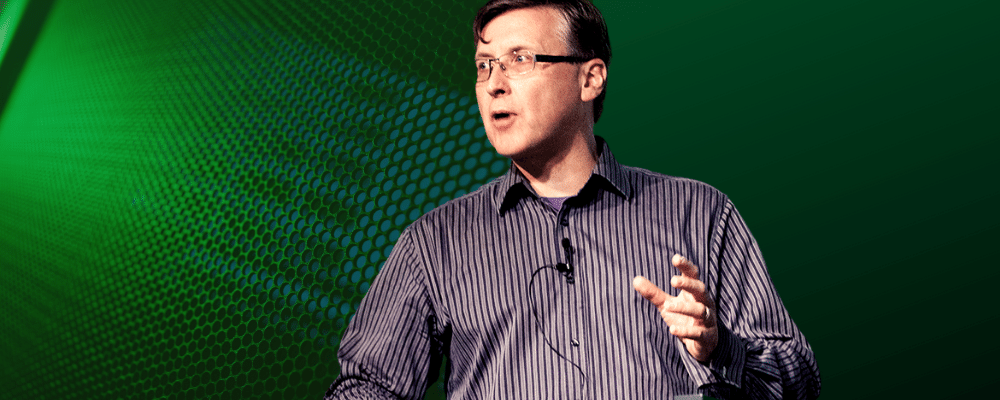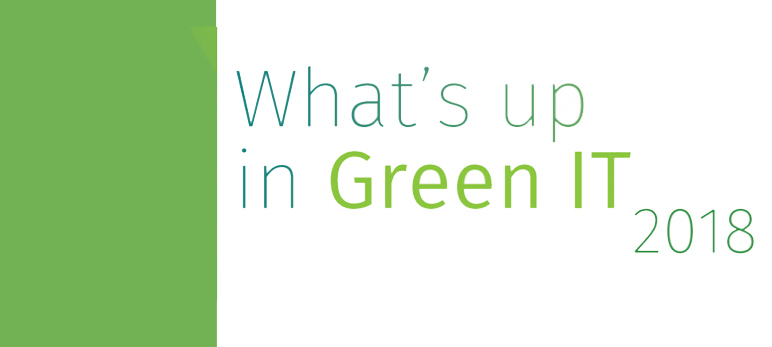
“Sustainable ICT - Achieve more with Less: The experience of CircularComputing, CATALYST & best practice data centres” - ICTFOOTPRINT.eu 11th webinar
This, the 11th and penultimate of the series of ICTFOOTPRINT.eu webinars provided an informative overview on how to achieve more with less in the ICT process through a series of presentations that looked into how to introduce re-manufacturing into the ICT process through circular computing and how to achieve energy & cost savings in data centres.
Sustainable IT – Do you know the true cost?
Steve Haskew (Strategic Commercial Manager of CircularComputing) introduced CircularComputing, a secondary equipment manufacturer which focuses on re-manufacturing IT equipment. The re-manufacturing cycle is the process of reviving and restoring used parts and, when necessary, replacing them with a component that is equivalent to, or better than, the original part. This process launches a new life cycle and maintains the intrinsic value of the product at the highest possible level, providing the same or better performance of the component.
CircularComputing understood that people were not able to determine risk when it came to select a reconditioned product, instead of a brand-new IT equipment. The user was then compromised in their decision making on buying remanufactured equipment. Therefore, Circular Computing quickly offered a deal to provide laptops ready for re-use with a new battery (involving an agreement with Duracell), a complete cosmetic overhaul and a 3-year warranty. As CircularComputing is a secondary manufacturer, this means that they can deliver a user experience similar to a new manufacturer, while sitting between the second hand and the new market.

An important topic is why companies do not fully embrace the sustainability mind-set? Steve understood that is it common that company departments are not aligned with the question of sustainability, namely the IT & Finance Team with the Sustainability one. CircularComputing is working on making these two teams to dialogue with each other, so they can together define what IT sustainability means to their organisation: does the organisation focuses on one specific aspect or shall it consider as a whole (known as the full life cycle assessment -LCA)? One of the core parts of sustainability is Energy. This is just one topic but there are three parts to it i.e. Energy in Product Production - Energy In Use – and Energy at Disposal. The question is which one do you value most as a user? Probably this would be Energy in Use which is the one that has the most impact today. However, usage and cost versus product saving and CO2 production should also be considered.
Standards and Best Practices Supporting ICT Sustainability
Mark Acton’s (Head of Data Centre Technical Consulting, CBRE) presentation was not on ICT generally, but rather the data centre elements of ICT, specially focused on Standards that are related with sustainability. Data centres are a huge component now of the ICT landscape. Whatever service is being used, always comes back to a data centre both in business and in social life and there are many standards that are supporting sustainability of this IT equipment.
However, data centres have presented a challenge in terms of trying to define what sustainability and energy efficiency looked like. There have been several competing standards that have claimed to represent goodness. The problem is that a lot of these claims have been spurious, or even invalid and some are being made by commercial organisations. Therefore, with the publication of an ISO IEC based on a genuine European international standard, this finally presents a bench set and a set of KPIs that allow understanding of what we are doing and compares how well we are doing it, potentially against others. Therefore, a landscape is finally being achieved where there is a consistent benchmark and one that everyone understands. When focusing on the building level (the power, the cooling, telecommunications cabling and physical security), the KPIs referenced from 4-1 to 4-3 are all ultimately about sustainability and energy efficiency. It is not actually a measure of efficiency but a measure of how effective your building is at delivering power to the IT equipment and in removing heat. The renewable energy factor is something that is more addressed to sustainability. The renewable energy factor really talks about the amount of renewable energy that you are using in your data centre compared to non-renewable energy. A key element of the KPIs, some of which are under development or have been developed, is that they are based on ISO IEC standards. So, the ISO IEC numbers define to all of us globally how we should be measuring “Power Usage Effectiveness” and “Renewable Energy factor” and that is why it is important to have global standardised benchmarks, as in their absence there wouldn’t even be a common language. The 50600 TR (Technical Reports) 99-1 and 99-2 provide a set of recommended practices which essentially provide guidelines as how to you can directly save energy or improve your environmental sustainability within data centres.
Mark introduced the Eco-Management and Audit Scheme (EMAS), developed by JRC, part of the EC. The significant things about EMAS is that it aligns with existing ISO standards and therefore global standards like 14001, 14040 and 14044 which relate to LCAs, which addresses the environmental aspects and potential environmental impacts. But highly importantly, these refer to both the best practices from the EU Code of Conduct (EU CoC) and the EN 5600 99-1 document. Therefore, these are now becoming the standard and guidelines that should be adopted within a data centre environment. This is a voluntary scheme at the moment but may become less so in the future.

In conclusion, Mark stated that this is a comprehensive framework, so that each organisation can reference the others work. the EU CoC includes a commitment to “Introduce a plan for LCA” in accordance with emerging EU guidelines and internationally standardised methodology (ISO 14040)”. The good thing about data centres is that there was nothing specific in that area until about 18 months ago and now there is something that can be applied.
CATALYST introduces the Green Data Centre Assessment Toolkit
Vasiliki Georgiadou (Project Manager of the Catalyst Project at Green IT Amsterdam) stated that, regarding data centres, we shall go beyond energy efficiency and start tackling the sustainability of datacentres in terms of performance and impact. Data centres usage is increasing due to the amount of data that is produced, transferred and processed with almost everything that we do in our daily lives, but at the same time we must be conscious as to how we use the primary energy sources. ICT, with the data centres representing their hub, can support energy grids both in terms of electricity and heat in the effort to become more sustainable.
CATALYST project, funded by European Union, aims to convert Data Centres in Energy Flexibility Ecosystems. The idea is that electricity (incl. flexibility), heat and IT load are commodities that data centres can transfer, exchange and trade in their corresponding emerging markets either individually or combined to achieve synergies. CATALYST introduces the marketplace as a service concept where there are 3 marketplaces, the electricity marketplace between data centres and electricity providers, the equipment marketplace and that of the energy produced. The framework is adaptable to a growing variety of data centre capabilities with a range of different types such as enterprise, high performance etc., with different geographical locations (as is evident from the composition of the consortium) different architectures.

CATALYST project is also trying to take selected metrics and KPIs to measure sustainability elements and create a comprehensive and easy to use toolkit to better navigate the ever-growing landscape. This set of tools and process help to measure and assess both KPIs and metrics that are related to the data centre with respect to sustainability.




 © 2018 ICTFOOTPRINT.eu – ICTFOOTPRINT.eu has received funding from the European Commission’s Horizon 2020 research and innovation programme under the Grant Agreement no 690911. The content of this website does not represent the opinion of the European Commission, and the European Commission is not responsible for any use that might be made of such content.
© 2018 ICTFOOTPRINT.eu – ICTFOOTPRINT.eu has received funding from the European Commission’s Horizon 2020 research and innovation programme under the Grant Agreement no 690911. The content of this website does not represent the opinion of the European Commission, and the European Commission is not responsible for any use that might be made of such content.